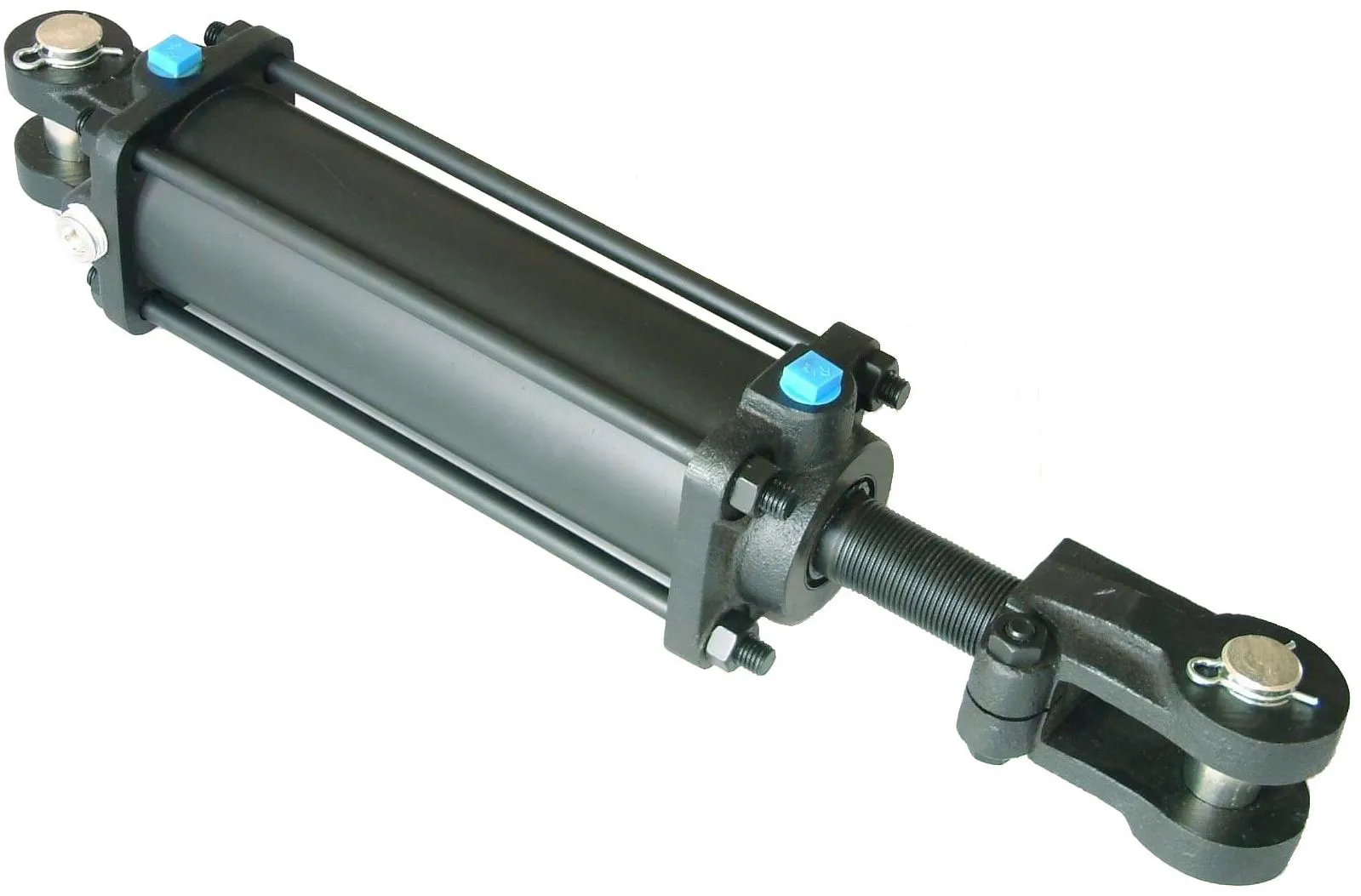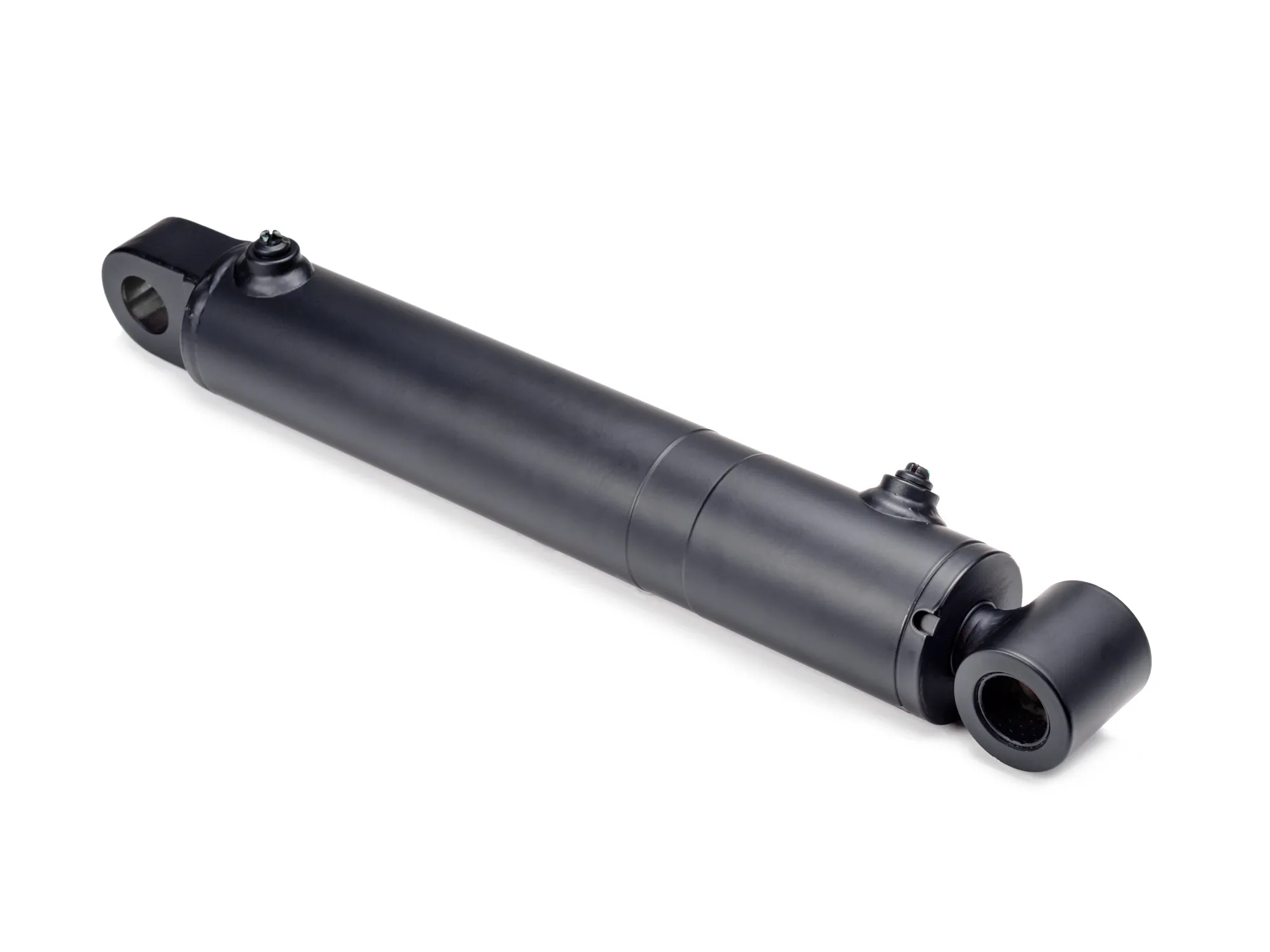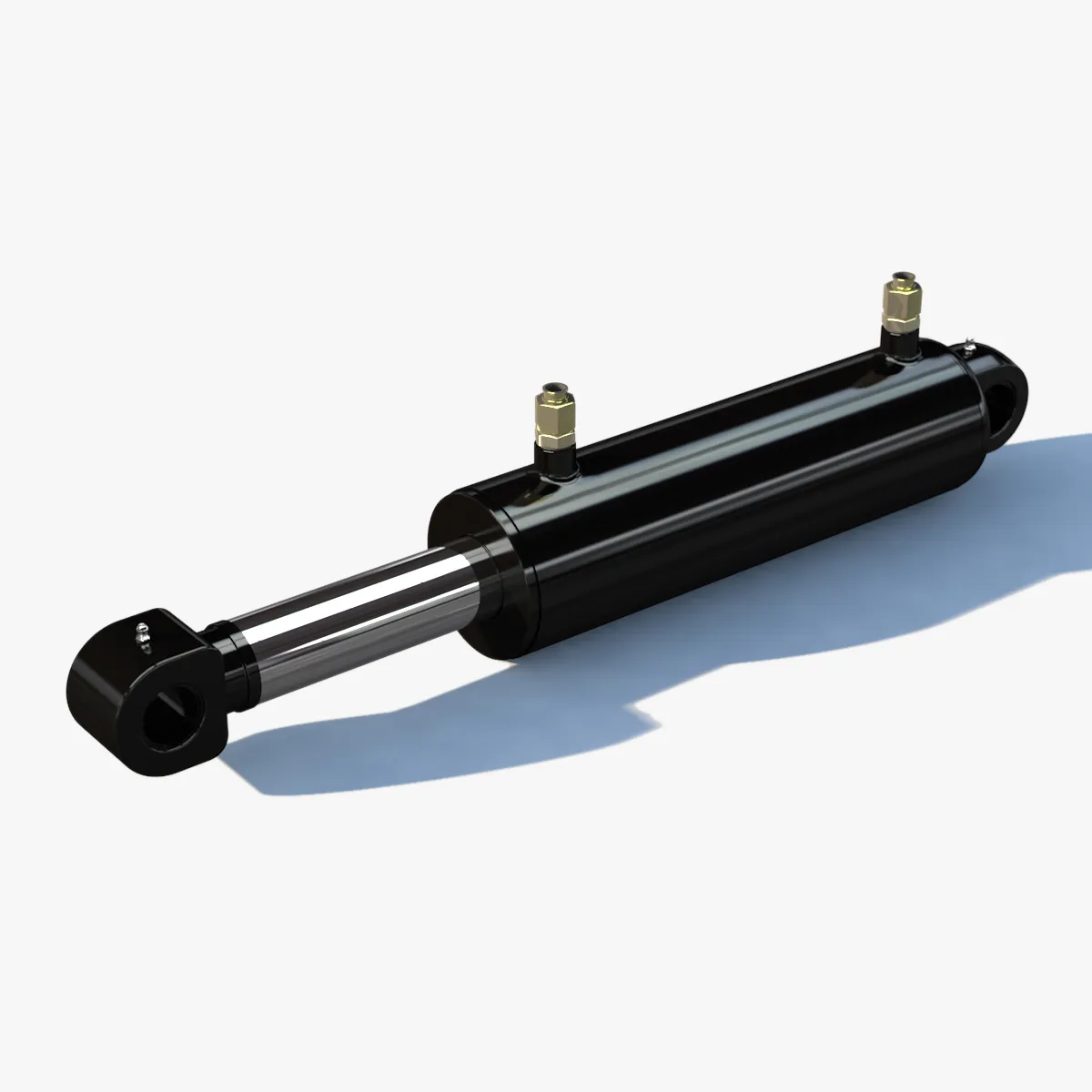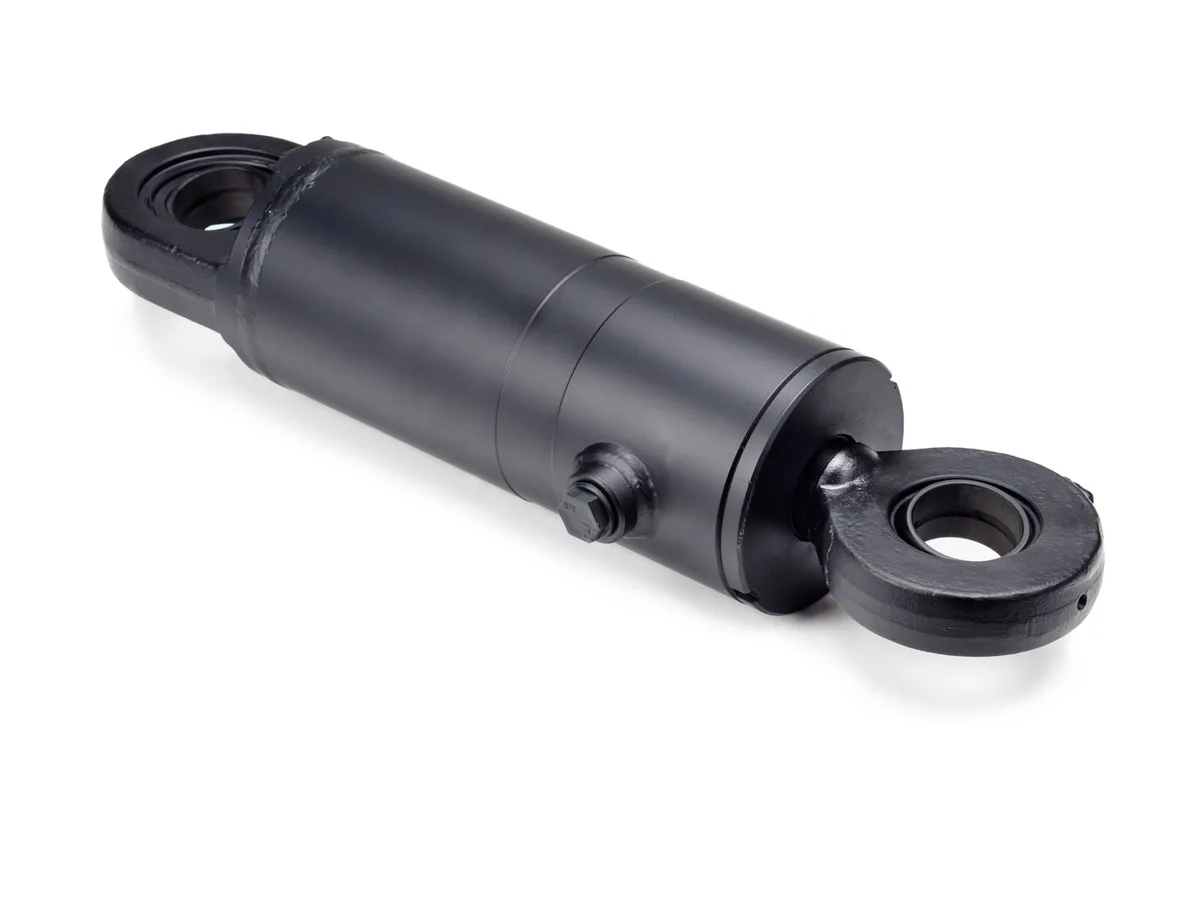Unlocking the Potential of Locking Single-Acting Hydraulic Cylinders
Introduction
The locking single-acting hydraulic cylinder with integrated lock mechanism is a versatile and reliable tool that operates under hydraulic pressure in one direction, providing a secure locking function to prevent movement in the absence of pressure.
Design and Construction Characteristics
Locking Mechanism – Safety
The main feature of the locking single-acting hydraulic cylinder is its locking mechanism, which ensures the piston remains in a safe position even when hydraulic pressure is lost, preventing accidental retracting. This mechanism can be mechanical or hydraulic, customized to suit specific applications.
Variety
The design of the locking mechanism can be tailored to specific needs, utilizing spring-loaded devices, pin locks, or other mechanical locks to ensure safety and stability.
Compact Structure – Space Optimization

Locking single-acting hydraulic cylinders are designed to be compact, making them ideal for use in confined spaces and a wide range of equipment and machinery.
Precision Manufacturing – High-Precision Machining
Components undergo high-precision machining to ensure optimal fit and sealing performance, minimizing the risk of leakage. Strict quality control measures are implemented during production to guarantee reliability.
Assembly Process – Specialized Assembly
Professional technicians oversee the assembly process to ensure correct installation and calibration of individual components. Following assembly, hydraulic cylinders undergo pressure testing to ensure performance and tightness.
Working Principle
Single-Acting Mechanism
When hydraulic oil is pumped into the chamber, the cylinder extends and pushes the piston outward. Retraction is achieved through a locking mechanism that holds the piston in position, even in the absence of hydraulic pressure.
Locking Mechanism
The locking function, whether mechanical or hydraulic, prevents the piston from retracting under load, ensuring safety and stability even if the hydraulic system loses pressure.
Types and Configurations
Standard Locking Single-Acting Hydraulic Cylinder
Traditional design with a reliable locking mechanism for various applications.
Customized Locking Mechanism Cylinder
Can be tailored to specific needs, incorporating unique locking features for specialized applications.
High-Pressure Locking Cylinder
Designed to withstand high pressures, ensuring optimal performance in demanding environments.
Benefits
Enhanced Security
Locking mechanism reduces the risk of accidental retractions, enhancing operator safety.
Reliability
Designed to operate effectively under high loads and varying conditions, ensuring consistent performance.
Simplicity
Easy to operate and maintain, making it user-friendly for a wide range of applications.
Applications
Construction Equipment
Commonly used in cranes, hoists, and lifts where heavy objects need to be securely fixed.
Manufacturing
Utilized in presses for forming materials under high pressure, requiring secure fixation during processing.
Transportation
Found in stabilizers and jacks for vehicles to ensure safety during maintenance and transportation.
Aviation
Integral to landing gear systems, fixing landing gear in position during takeoff and landing for optimal safety.

Design Considerations and Selection Criteria
Bearing Capacity
Understanding the load-bearing capabilities of the cylinder to ensure optimal performance.
Sealing and Durability
Utilizing high-quality seals and durable materials for long-lasting performance and minimal maintenance.
Safety and Maintainability
Emphasizing safety features and ease of maintenance for efficient operation and longevity.
Sealing and Lubrication
Seal Materials
Utilizing piston seals, rod seals, and wear-resistant materials for optimal performance.
Lubrication
Regularly filling the cylinder with hydraulic oil to ensure proper lubrication and prevent wear.
Inspection and Maintenance
Regular Inspection
Implementing routine inspections and preventive maintenance measures to ensure optimal performance.
Proper Lubrication
Maintaining adequate lubrication levels to prevent wear and extend the life of the cylinder.
Seal Replacement
Replacing seals as needed to maintain optimal performance and prevent leakage.
Installation Guide
Properly align the cylinder during installation, secure with mounting brackets, and conduct a pressure test to confirm performance.
Maintenance Tasks
Regular Inspection
Consistent monitoring of the cylinder’s performance and condition to detect any issues early.
Proper Lubrication
Maintain adequate lubrication levels to prevent wear and ensure smooth operation.
Seal Replacement
Replace worn seals promptly to prevent leaks and maintain optimal performance.
Safety Considerations
Emphasize the importance of safety measures when operating and maintaining locking single-acting hydraulic cylinders to prevent accidents and ensure operator safety.
Fault Diagnosis and Common Problems

Provide troubleshooting tips and solutions to common issues to help readers effectively diagnose and resolve problems, minimizing downtime and maximizing performance.
Unit Power
Cylinder Diameter and Stroke

Optimizing cylinder diameter and stroke to increase applied force and power output.
Operating Pressure
Considering the hydraulic system’s pressure to determine the unit power output while maintaining overall safety.
Piston Speed and Load
Adjusting piston speed and load conditions to optimize power output and system performance.
Advantages of Optimizing Power Unit
Improved Efficiency
Enhanced power output shortens operation time and increases production capacity.
Energy Saving
Reduced energy consumption through optimized design and operation, lowering operating costs.
Enhanced Reliability
Effective power management extends equipment service life and reduces failure rates for improved reliability.
FAQs
How does the locking mechanism in a single-acting hydraulic cylinder work?
The locking mechanism holds the piston in place, even without hydraulic pressure, ensuring stability and safety.
What are the main components of a locking single-acting hydraulic cylinder?
The main components include the cylinder, piston, locking mechanism, seals, and hydraulic system.
What advantages do locking single-acting hydraulic cylinders offer over standard cylinders?
Locking cylinders provide enhanced safety, reliability, and stability, critical for applications requiring secure fixation under load.
Long-Tail Keywords
Locking Single-Acting Hydraulic Cylinder for Heavy Machinery
Designed for heavy-duty applications requiring secure locking mechanisms and reliable performance.
Customized Locking Single-Acting Cylinder for Industrial Automation
Tailored solutions for precise control and safe operation in automated manufacturing processes.
High-Pressure Locking Cylinder for Aerospace Applications
Engineered to withstand extreme pressures and ensure safety and stability in aviation systems.
Our Company
We are a leading hydraulic cylinder manufacturer and distributor, offering a comprehensive product line for domestic and international markets. With a focus on professionalism, international certifications, customized services, advanced production equipment, and exceptional after-sales support, we strive to meet the diverse needs of our customers.
Author: lyl
